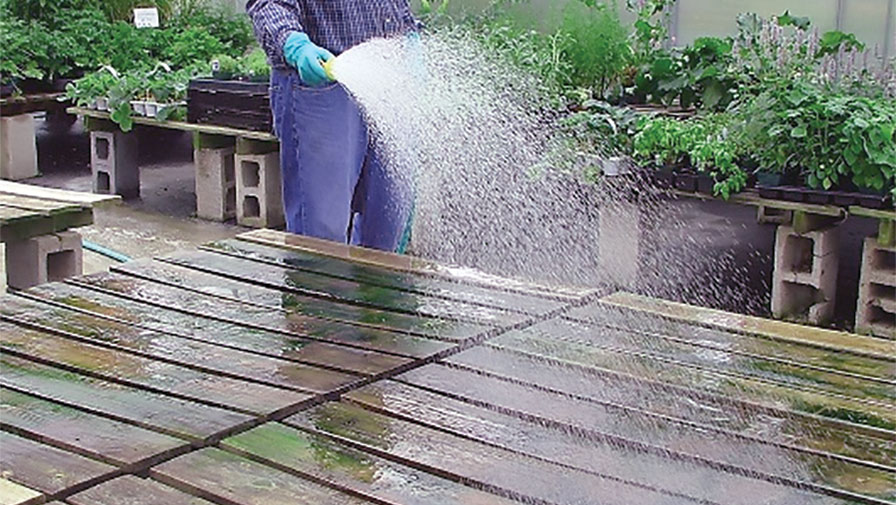Watch Out for Algae in the Greenhouse
 Algae growth has similar requirements as cultivated crops for development: light, water, and nutrients, which means the frequent irrigation, nutrient runoff, and increased temperatures during the late spring and summer months create an environment primed for algae growth. Greenhouses, nurseries, and landscapes can all be vulnerable to algae when the right factors combine. This means acting preventatively is key for effective management.
Algae growth has similar requirements as cultivated crops for development: light, water, and nutrients, which means the frequent irrigation, nutrient runoff, and increased temperatures during the late spring and summer months create an environment primed for algae growth. Greenhouses, nurseries, and landscapes can all be vulnerable to algae when the right factors combine. This means acting preventatively is key for effective management.
Algae spores spread via water, people, and equipment with exponential growth after germination. Therefore, controlling indoor growing conditions to reduce spore transmission is the first line of defense. Cleaning and sanitation protocols are vital for algae remediation, as is source water treatment. Implementing efficient nutrient programs, reducing runoff, and improving drainage and airflow also mitigates these conditions.
If algae show up inside a facility, it can create worker safety hazards and becomes a vector for insect pests and pathogens on equipment and soil surfaces. Algae on hard surfaces cause a range of issues when it covers equipment like irrigation tanks, emitters, walkways, and weed mats. When algae are left unchecked on hard surfaces, the slimy surface creates dangerous slip-and-fall hazards around the workplace.
Aside from workplace risks to personnel, algae infestations on the soil surface absorb vital nutrients meant for the plant and irritated hydrophobic soil conditions further complicate the delivery of these vital inputs. Lastly, insects like fungus gnats and shore flies make algae their habitat and food source, then reproduce; and populations can get out of hand. Implementing a management program can reduce these pest populations without the need for pesticide applications.
Continue reading here.









